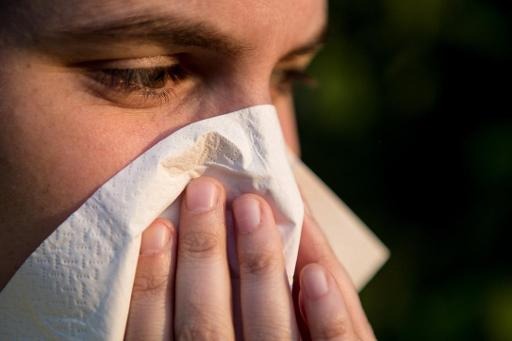Longer days, warmer weather (normally) and the blossoming of flowers: most people welcome springtime with open arms. But for those who fall prey to mosquitos, suffer from hay fever or easily get sunburned, this can be a painful time of year.
From showering and washing your hair to prevent pollen from gathering, to what to look for when buying sun cream, here are some tips to protect you from the perils of spring.
Sunscreen and covering up
Just two weeks after snow covered many parts of the country, including Brussels, the sun started making its appearance in the last few days. After a long wait, people were eager to get out in the sun during this long, sunny weekend and the suntanned (or sunburnt) faces are proof of that.
However, following the lack of UV light in the winter months, people's skins are not yet well-protected against the sun as pigment cells have yet to start forming melanin in protection against these UV rays, meaning the risk of getting sunburn is higher.
While a tanned skin is a sign that the skin's defence mechanism has been activated, burnt skin means that the defence has failed and that damage has been done. Aside from being painful, burned skin also increases the risk of skin cancer.

A sunny day in Brussels. Credit: Belga
The risk of getting sunburned also depends on the UV index, which ranges from zero to 12; anything less than 3 does not require protection. However, from 3 to 5, people should use some protection on exposed parts. The index will be between 4.5 and 6 in the coming days, meaning protection is required, especially for those with pale and sensitive skin.
Dermatologists recommend using sunscreen with an SPF of 30 or more. Sunscreens should be reapplied approximately every two hours when outdoors, and after swimming or sweating. High-number SPFs last the same amount of time as low-number SPFs, meaning they need to be reapplied just as frequently.
When the sun is at its strongest (usually between noon and 15:00 in summertime), it is wise to remain in the shade. When out and about, cover up your skin to give it sufficient rest from UV rays.
Red alert for hay fever
The first pollen started spreading in Belgium in mid-February, particularly affecting people allergic to alder and hazel. In recent weeks, high birch pollen levels have also been measured across the country, as well as yew, some Cupressaceae, oak, plane, willow and ash, which are also in bloom.
Showering and washing your hair regularly, as well as cleaning your nose with physiological water can help alleviate symptoms. People are advised to use paper handkerchiefs that can be thrown away, rather than cloth handkerchiefs, which again will attract more pollen to gather.
Finally, consult pollen station recordings from the Sciensano national health institute and avoid going out when high levels of pollen are being measured.

People who are allergic to pollen tend to have watery and red eyes, sneezing fits, and a tickle throat. Credit: Belga
Hay fever sufferers tend to have watery and red eyes, sneezing fits, a loss of sense of taste and smell, but can also experience symptoms such as a runny nose, cough or shortness of breath (in case of asthma), which could easily be mistaken for flu or a Covid-19 infection. In case of doubt, it is advised to call your doctor.
On Monday afternoon, there will be a 'fairly large' to a 'large amount' of pollen in the Belgian air, according to the country's hay fever radar. In the coming days, and particularly at the weekend, when rain is expected, the levels will once again decrease, according to predictions.
Bites and itches
As the sun reappears, so do the little insects that bite and sting us, including mosquitos. Female mosquitos go in search of blood, to extract proteins to develop their eggs.
When sucking up blood, they leave behind saliva so the blood does not clot immediately. This saliva is what triggers a small inflammation in the area where the insects bite us, which our bodies react to.
A whole range of devices, sprays and other techniques can be used to keep them and their ominous buzzing at bay. Giving spiders, bats and amphibians in the water nearby your house a warm welcome is one way to keep mosquitos away, as they help catch them or make their environment hostile.
Placing a mosquito net above your bed is also a mosquito-friendly way to keep them away. These can be bought in ready-made formats, and do-it-yourself shops also sell mosquito net fabric to attach to a wooden frame yourself.
However, these methods alone are sometimes not enough. There are many natural repellents, from thyme, rosemary, lavender, lemon balm, basil and mint, to flowers such as pelargonium, geranium and marigold, that help keep them away because of their strong smell.

